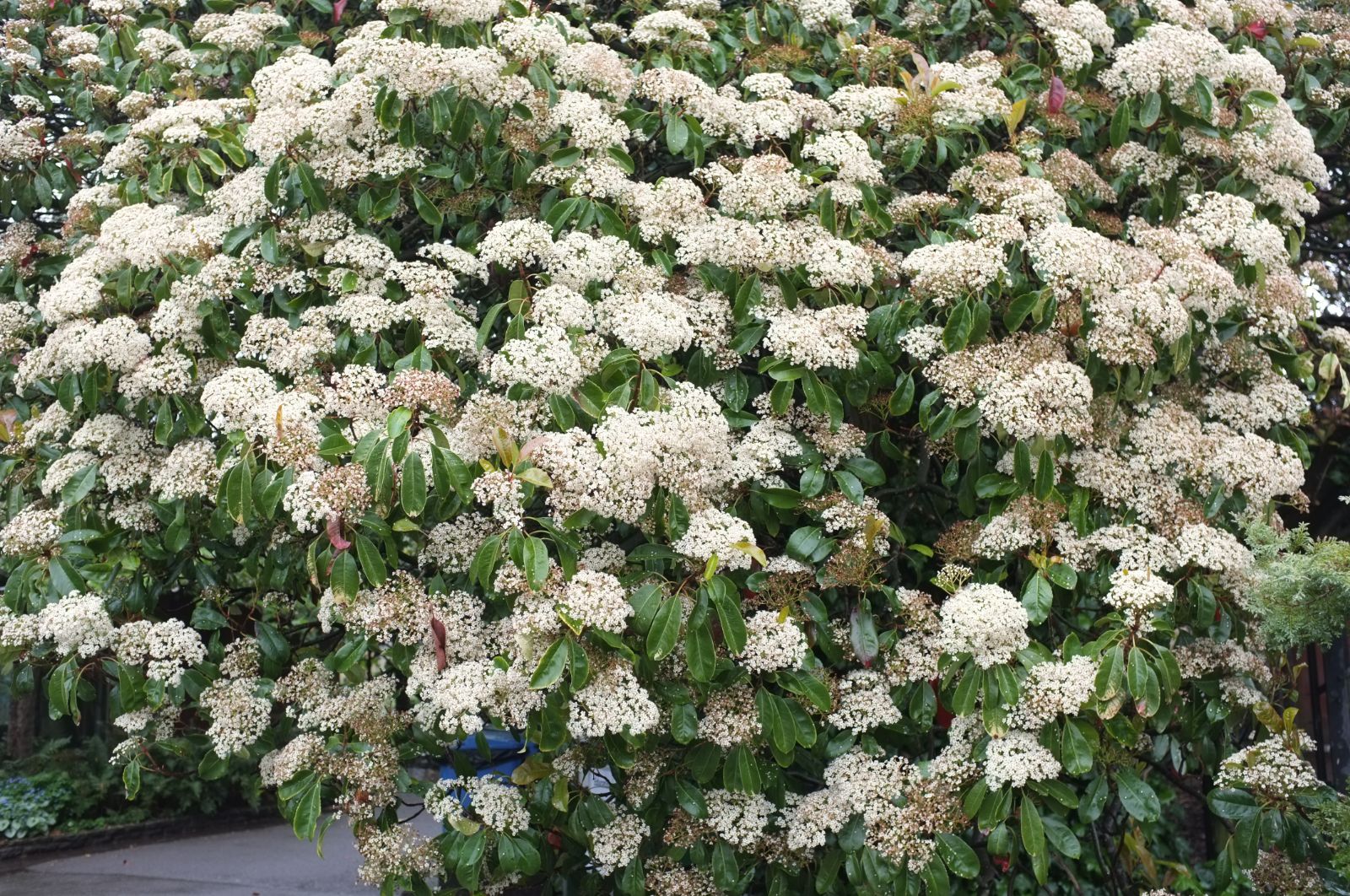Photinia glabra
Credits
Article from Bean's Trees and Shrubs Hardy in the British Isles
Recommended citation
'Photinia glabra' from the website Trees and Shrubs Online (treesandshrubsonline.
Genus
Synonyms
- Crataegus glabra Thunb.
- Sorbus glabra (Thunb.) Zab.
Infraspecifics
A glabrous evergreen shrub up to 10 ft high. Leaves bronzy when young, becoming glossy dark green, narrowly oval, sometimes slightly obovate, 11⁄2 to 31⁄2 in. long, one-third to half as wide, pointed, tapered at the base, regularly and shallowly serrate; stalk 1⁄4 to 1⁄2 in. long, glabrous. Flowers in loose, terminal, much-branched panicles 3 to 5 in. across, scented like hawthorn, each about 3⁄8 in. wide with five narrowly oval petals, white tinged with pink, hairy on the inside at the base, opening in June. Fruits globose, 1⁄8 to 1⁄4 in. wide, red, ultimately black.
Native of Japan, whence Wilson introduced it in 1914, but it may have appeared previously; it also occurs in China. It is a pleasant evergreen without any outstanding merits. The related P. serrulata is a much larger shrub or small tree, with larger, oblong or oblanceolate leaves, leaf-stalks hairy when young and longer than in P. glabra (up to 13⁄4 in. long), and glabrous petals.
From the Supplement (Vol. V)
cv. ‘Rubens’. – this makes a bushy shrub. Unfortunately, it is less hardy than the clones of P. × fraseri, which have less brilliant young foliage.
† cv. ‘Variegata’. – Leaf-margins white flushed with pink. Said to be hardier than the green-leaved form.
P. × fraseri – The clone ‘Robusta’, raised in Australia, has proved the hardiest and most vigorous of those available, and has attained a height of 12 ft after only six years in the Hillier Arboretum (R. Lancaster in The Garden (Journ. R.H.S.), Vol. 101, p. 441 (1976)).
P × fraseri Dress
A group of hybrids between P. glabra and P. serrulata of which the first to be identified and described was raised by the Fraser Nurseries, Birmingham, Alabama, USA. It was found around 1940 among seedlings raised from the seeds of P. serrulata, which grew in the nursery in close proximity to P. glabra. All of the batch agreed with the seed-parent except this one outstanding plant, which was propagated, and the first plants put into commerce in 1955. According to W. J. Dress, who described this hybrid in Baileya, Vol. 9 (1961), pp. 101–3, it is intermediate in its characters between the two parents in the size and shape of its leaves and in the length of the petioles, which are hairy as in the seed-parent. The inflorescence is intermediate in width and the petals are downy on the inside at the base as in P. glabra, though less densely so. The original clone, which has been named ‘Birmingham’, is notable for the bright bronzy-red young growths, produced from spring until quite late in the summer.Two other photinias probably belong to this group, namely ‘Robusta’ and These hybrids, which are scarce at present, will in time become valued ornamental evergreens, especially in gardens on chalky soils, where Pieris formosa ‘Wakehurst’ and similar clones cannot be grown. The young growths are less frost-tender than in the pieris, and in character over a much longer period – up to almost four months.

